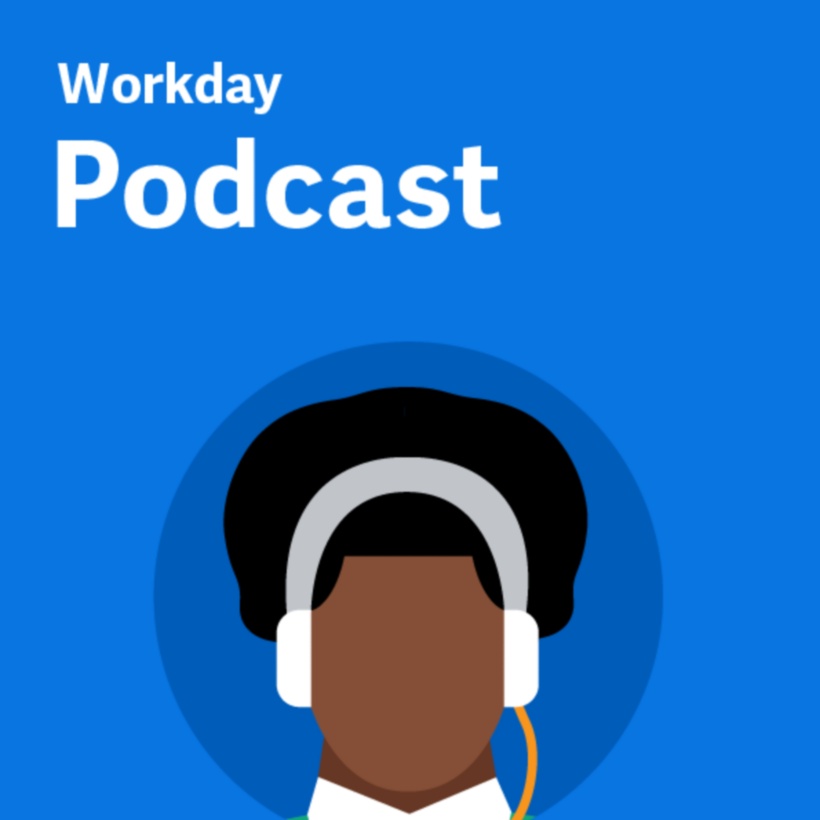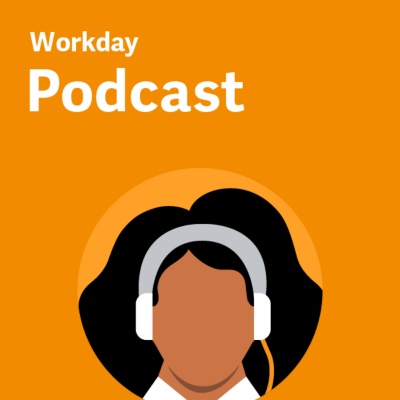Keith Lohkamp: Facing mounting pressures like talent shortages, supply chain disruption, and increasingly tight operating margins, healthcare organizations are at a critical moment in history. Healthcare leaders have the opportunity to rise to these challenges levering technology to increase visibility, gain actual insights from data, and do more with less. I'm your host, Keith Lohkamp, senior director and product strategist for healthcare solutions at Workday. And I'm pleased to be joined by KC Whitehead from KPMG. Today we're going to talk through healthcare trends, challenges, and how the Workday industry accelerator will drive value for healthcare organizations. KC, thanks for joining me.
KC Whitehead: Thanks for having me, Keith.
Lohkamp: So KC, tell us a bit more about yourself and your role at KPMG.
Whitehead: As you said, I'm a partner with KPMG in our Workday practice. I'm based out of Atlanta. I've been in the HR transformation space for the better part of 25 years, and I've been helping healthcare organizations transform their HR and payroll functions using Workday for about the past 10 years. And increasingly, as we've seen the technology shift with the introduction of supply chain by Workday in the last few years, most of our clients have shifted to going full platform, HR, payroll, finance, and supply chain. So that's where I'm shifted to and what our focus has been, helping our clients across the entire back office.
Lohkamp: Given that experience, you've probably seen a lot of changes in the industry, but what are the trends that you're seeing today within healthcare?
Whitehead: Well, Keith, there's really three things that come to mind. The first one, and I think you mentioned it, and it's not going to be a surprise to anybody, is the staffing challenges stemming from COVID-19 in the industry. I will throw some statistics at you here. The labor expense in healthcare has gone up by 37% since the Q1 of 2019, a full year before COVID. There's a number of things contributing to that. The Great Resignation, obviously, which has affected all industries, your industry, our industry, it's hit healthcare particularly hard. Hospital employment is down by over 100,000 employees since 2019. In addition to employment being down, demand has gone up. We've seen average acuity of hospital stays increase by about 10% in the last few years. And how have hospitals been dealing with that? Traveling nurse usage has increased significantly. Job postings for traveling nurses are up 120% over this time, in addition to the drop in employment. 95% of hospitals are reporting that they're using traveling nurses. As a percentage of RN hours across healthcare organizations, hours worked by traveling nurses in the last two years has increased from 3% to 23% of their hours. And their expenses have increased from 4.7% of expenses to 39%. So it's been a significant driver of increase in cost and decrease in hospital margins. What organizations really need to do is understand why nurses are leaving and address that. And there's no silver bullet. And one of the things organizations really need to do is be in touch with their workforces, start treating them as importantly as they treat their customers, and be implementing strategies on the local level that are going to help to address that turnover. But they're not going to stem it entirely. It's going to continue, and we can talk a little bit more about that. They also need to increase the velocity of bringing nurses on board. So in the face of high turnover, you have to have a really industrial-strength talent acquisition function that operates effectively. So that's one trend, Keith.
Lohkamp: Yeah. Well, and that increased costs and labor is putting a lot of pressure on margins, and it's not just the cost of labor that's going up. It's the cost of supplies are going up. There're shortages as well. So we're seeing pressure on margins. The supply chain disruption is really impacting the whole industry as well, and I'm sure you've seen that with your clients as well.
Whitehead: Well, that's exactly right. I think you're reading my script. That's the second trend that I was going to speak to is the rise in supply chain costs. So not only are they being hit by labor, which is their single largest expense, but supply chain is most of everything else. Supply expenses are up 16% from 2019 to 2021. And in the ICU, where we've had a lot of traffic related to COVID, they're up 31%. Costs are going up, as you said, and this combined with the higher acuity of patients seen over this time-- we talked about acuity increasing 10%. That's measured by average length of stay. As a result, there's about a third of hospitals right now that are operating with negative margins. And that's clearly not sustainable. The government's played an important role during COVID-19 to help lots of organizations through these tough times, but we know that that can't continue, and it's not continuing. Organizations are going to have to start looking internally. How are we going to solve these margin problems? They're not going away any time soon, but there are some things that they could be doing about that. You talked about supply chains being impacted by the global pandemic, and hospitals also turned to new local suppliers, and paid a premium for doing that. So their supply chain strategies need to evolve as well.
Lohkamp: So what role do you see technology playing in helping address some of these challenges?
Whitehead: Well, that's a great question, and you might also ask what role can't technology play? Technology can play a number of roles. Let's talk about the staffing problem with nurses. The number one reason nurses are leaving the field is the admin work that gets in the way of taking care of patients, which is kind of a surprising statistic. Obviously Workday can play a role in helping to reduce administrative work on nurses, making things simpler. I know we saw some things in the keynote about being very employee-focused and making the technology transparent. Workday's come a long way, and I know that there will continue to be a lot of strides made in continuing to increase the amount of time that nurses can spend seeing patients. It reminds me of an experience I had last year. We had just implemented Workday HR and payroll for a pediatric hospital, and a colleague showed me a text message that he got from a nurse who was working for that hospital who just happened to be a friend of his. And the test message said, "Workday has changed my life."
Lohkamp: Wow.
Whitehead: Because she can submit and approve things with her phone and not have to go to a desktop, which, by the way, she doesn't have. So just one little example of the impact that technology investments and decisions can make. So taking care of nurses, managing staffing costs, those that they control, for minimizing expensive things like overtime and traveling nurses that we talked about. Got to address staff turnover, what are the issues at any organization that are driving that turnover, and develop creative solutions in partnership with HR to address the turnover, try to minimize it. Getting nurses onto the floor as quickly as possible through simplified and streamlined onboarding. You can't have onboarding processes that take a month, and halfway through, the nurse takes a job somewhere else. And you see that happening. Maximizing the use of existing staff through optimized scheduling, matching up skill sets with nurse availability with those nurses that are least likely to cause you to go into an overtime situation. You've got all that data. You just need to bring it together and use it.
Lohkamp: Yeah, absolutely. Yeah, that was all great examples of technology and how Workday technology can help with quickly onboarding new staff or listening to identify what's that employee's sentiment and why are those nurses actually leaving. And can I understand my risk ahead of time and put together the right programs as well? And that wasn't possible before without sort of the aid of the technology, or it would be very difficult to really get a picture of what's happening within your organization.
Whitehead: Yeah. They certainly could do it, but it was difficult to do. It was difficult to do real-time. It was difficult to do, repeatedly, over time, and see what your trends are. And you're bringing the technology to bear that's going to enable that, right, going forward?
Lohkamp: Right. Even as we've evolved our technology and gotten more and more data, it then has become harder to really understand what is driving a change in a KPI and metric. And that's where new things like machine learning are really kind of revolutionizing being able to help guide the organization as well. So it's definitely seen the technology truly impact and help enable some of these changes.
Whitehead: Absolutely agree. Another lever I think we can use technology for is on the supply side. We talked about the increase in supply chain costs. It's really about wrangling rogue spend, transforming the supply chain function to be more centralized, to be more disciplined, to have more flexibility in the face of supply chain disruptions so that in the future, when it happens again, we're not left trying to figure out what to do with our local suppliers. That can all be pre-programmed and pre-thought-out.
Lohkamp: Yeah. And we heard a lot of those stories this week about how supply chain leaders are really getting a seat at the table and really being part of that leadership committee as the role of supply chain and the need for effective supply chain leadership has really grown over the past couple years. And I'm expecting it to really stay there in place because it's just a central role in terms of advising and guiding the business.
Whitehead: Yeah. I would agree. I think, just as you've seen HR increasingly have a seat at the leadership table through a chief people officer, a chief talent officer, let alone a chief HR officer - which a lot of organizations didn't have ten years ago - I would expect to see something similar in supply chain as it gets elevated from being a center within finance, to being a focus area of its own, and to your point, having a seat at the leadership table.
Lohkamp: So let's switch gears a little bit. Workday and KPMG are partnering on a healthcare industry accelerator program to help healthcare organizations on their path toward digitization. Can you take a minute and explain what the industry accelerator program is for healthcare organizations?
Whitehead: I sure can. Obviously, organizations are looking for speed to value. But speed to value doesn't just mean a shorter timeline. Too often I think the emphasis is on speed. How short can we make our timeline so we go live faster?
But what have you really gotten when you've done that? Going live in nine to twelve months, you've got speed, for sure, but what have you really gotten from the cloud implementation, other than what you had before, with a lot of blinking lights to prove that it's working? We believe the question should be how do we accelerate the realization of value? And that's what the healthcare industry accelerator program is really all about. Our healthcare industry accelerators are proven solutions, centered around Workday, that help our clients address some of these key challenges that they're facing, beyond simply going live with Workday. They're not science experiments that are dreamed up but, rather, solutions that we built with our clients to help them address some of these problems over time. While the accelerator, in name, may be new, in concept it's not. We bring leading practice to focus solutions really focused on driving business value, and if we had more time, I could talk with you a lot about the ways in which we have helped our clients achieve value through their Workday implementations. I think that's something that we emphasize as maybe a little bit different. Our clients love working with KPMG because of this emphasis on transformation and driving business value, combined with our unmatched experience in this industry and our commitment to their success.
Lohkamp: Yeah. A lot of times people talk about people, process, and technology, and it's a combination of all those things to really then achieve the objectives. And you're bringing that expertise in the industry plus those best practices, along with a deep knowledge of the technology as well, to help drive success for clients.
Whitehead: That's right. And when you talk about people, process, and technology, a big part of our approach that's different is our focus on the target operating model. If you were to picture a layer cake with six layers to it, that's really how we view any business operation, be that IT, HR, finance, supply chain, payroll even. There's the service delivery layer. Where is the work done? Where's the best place for the work to be done? What type of organization? There's, as you said, the people layer, people and organization. Who's doing the work? There's the functional process layer, right, how work is performed. Obviously, we can tailor the business processes within Workday, but without these other layers, they're not optimal. What are the governance and controls that you need to put in place around what work is allowed and who's allowed to do what? And how do you ensure segregation of duties? And what's the enabling technology? Obviously, Workday is a big part of it, but it has to integrate with sometimes hundreds of applications in some of these larger, more complex organizations. And data and reporting, the sixth layer of the target operating model. What's the information that I'm getting out of this technology, and how does that enable better decision-making? Another aspect of this approach beyond the six layers of the target operating model is something we call powered enterprise, which is really bringing leading practice to our clients. Based upon our experience, rather than starting from scratch, we bring the processes, governance, reporting, and controls and say these are solutions that have worked before for our large complex healthcare clients. Why won't they work for you? That starts our conversation about design, and what's really unique about an organization. Imagine if you were going to remodel your kitchen. Two approaches here. One would be I'm going to go down to the big-box store, and I'm going to buy faucets, and I'm going to buy knobs, and I'm going to buy a sink, and I'm going to buy drawers, and I'm going to buy cabinets. Then I'm going to install them all, and sure, I have a kitchen, but it's kind of a bummer when I can't open the dishwasher and the refrigerator at the same time. So think of powered enterprise as we've got you the showroom model that works for you and your needs. Let's use that as a starting point and talk about what you want to tailor.
Lohkamp: Yeah. And I love the fact that you also mentioned the broader ecosystem as well. Another part of industry accelerator is making sure that we're effectively working with that ecosystem of their software partners as well. And I'm sure at KPMG you really bring that experience and knowledge of: what does that healthcare broad ecosystem, and how do you all bring those together as well, to put together an end-to-end process.
Whitehead: Well, that's right. There's an end-to-end process. That process obviously starts before you get into Workday, and sometimes they go beyond it, and they cross systems. And we've got the experience to know when you're integrating with your third-party EHR system or your third-party supply chain system or your third-party time tracking system, what are the leaders, what are the challenges, what do we need to be looking out for?
Lohkamp: That's great. That's great. And what kind of value are you already seeing customers getting from the accelerator?
Whitehead: Yeah. Let me mention a few, Keith. One was a large East Coast children's hospital that really needed to remodel their new-hire onboarding process for nurses. We talked a little bit about the delay in bringing nurses onto the floor and the impact that that can have on an organization in so many ways. This client had a very drawn-out nurse onboarding system that delayed nurses from starting patient work. They had about a 30-day process, from start to finish, to complete the onboarding. We designed a ready-for-hire through the onboarding process, got rid of manual and analog processes in the onboarding system, forms were shifted into pre-work activities and notifications were added to prompt new hires along. And talk about results, this shortened the end-to-end onboarding process from 30 to 15 days.
Lohkamp: Oh, wow.
Whitehead: And new-hire orientation was shortened to one day. So if you are able to predict what your needs are going to be, and you're bringing enough people into your funnel, you're hopefully going to lose fewer of them because the process is shorter, and you're also going to get them on the floor seeing patients sooner.
Lohkamp: Probably shorter, probably better, but much better experience?
Whitehead: That's right. Another one that comes to mind is a New York healthcare system that needed to improve its employee scheduling. Here was the problem, and so many organizations have this problem, Keith. Physicians and nurse schedules prevented timely discharge of patients and full reimbursement for hospital stays. And I'm talking about Fridays. When you walk around the patient units and there's no doctors, what happens to those patients? A lot of time, they stay the weekend and are discharged on Monday. So nurse managers had no visibility to which employees were available and capable of taking open shifts. So if they solved the problem at all, they were turning to travelers, who we already talked about how expensive they are. What we did was we created a nurse manager dashboard that presents the names of clinicians with, quote-unquote, "hours to give before overtime," so not at risk of going into overtime, and their certifications and interest and availability. So I've got the right skill, I got the right availability, and it's the right economic decision for me. What were some of the outcomes for this organization alone? $4.6 million in annual savings in reduced overtime.
Lohkamp: Wow.
Whitehead: Part of that was 3 million for the nurses, but the other 1.6 million was for non-nursing staff. And 6.8 million in reduction in non-reimbursed lengths of stay. So we had a labor cost reduction as well as an unreimbursed cost reduction. It was pretty powerful.
Lohkamp: Yeah, that is a really powerful story.
Whitehead: There's one more, Keith. I wanted to talk about supply chain because that trend has been impacting organizations and squeezing margins. We had an organization in the East Coast that had a lot of maverick sourcing, very low on PO spend, just to name a couple of problems that they had. What we delivered was a target operating model redesign of their supply chain function. We talked about those six layers of the target operating model. That included centralization of sourcing, standardization of processes, automation of controls, and we are creating a robust change management plan to drive adoption. If you don't have that, you've got a lot of nice deliverables but not much else. What were some of the outcomes from that, you might ask? In the first year alone, $17 million in confirmed fiscal-year savings. On-contract spend increased by about 10%. On-PO spend increased from 70 to 85 percent for non-capital and doubled for capital expense. Over the first two years of the program, from this client, the savings from this initiative alone paid for their entire ERP transformation.
Lohkamp: Wow.
Whitehead: So when you talk about changing the conversation from technology to transformation of the full back office, and if you can get your clients or your customers to be thinking about transformation and value, it's redefining the conversation from an ERP replacement to a back office transformation. You can show them how they can pay for this themselves.
Lohkamp: Well, and that savings in costs is also going to really help maintain that margin and then provide that ability to be able to grow. Because we often think about saving money, but healthcare organizations need to be able to grow, need to be able to transform as changes in care settings, expectations from the market continue to change as well.
Whitehead: Well, that's right, Keith. That's another trend that we haven't really touched on, but I'll kind of do a fly-by on it. As organizations are seeing their reimbursement model shift from fee-for-service to value-based pricing, what we used to call capitation 30 years ago, organizations are having to be more creative about how and where they see patients. Shifting them out of the acute care setting, which is the most expensive and, by the way, the most dangerous place to see a patient, into, really developing integrated delivery networks that are integrated both vertically and horizontally. And that's why you're seeing so much merger investment in this industry. So you need the technology, and you need to have the technology and the operating models in place to be able to rapidly onboard acquired organizations, if they're really going to drive the value that you're looking for when you buy them in the first place.
Lohkamp: Yeah. And so you start getting beyond just how many hospitals you have, but it's really how many sites of care. Is it a surgery center? Is it a primary care physician in addition to the hospital? Because people want to see their caregivers in different settings, right?
Whitehead: Well, necessity is the mother of invention. People have had to see their caregivers in different settings over the past two years, haven't they? So you've seen a big jump in telehealth technology, payers paying for it, what they wouldn't have paid for two or three years ago, and they're realizing that it works. Why go back to the old model that was more expensive? And consumers now demand it.
Lohkamp: Yeah. And the need for new partnerships as well as we get new entrants into the market. They may be disrupting some, but they could also be the partner of the future, to be that new avenue to deliver care or to grow the organization.
Whitehead: Sometimes you have to be willing to be a little bit disruptive now and take some risks now if you see where the market is going, if you're going to be one of those that survives as opposed to one of those that's going to be acquired.
Lohkamp: Yeah. So can you share any best practices to maximize the success of the healthcare accelerator program?
Whitehead: Sure. One thing I think is, with such a large investment in technology, we need to get our clients and our customers to go a little bit further and make the investment in transformation as well. Let's not talk about this as an ERP replacement. Let's talk about an organizational transformation. This is what'll drive real value beyond replacing old technology. This is a very powerful message to give to your board, to your executive leadership. "Look at what I was able to accomplish with this organization," as opposed to, "Look what I was able to implement on time and on budget." Two very different conversations. The second one is take the time upfront to identify your biggest pain points and work with your implementer to set realistic improvement targets. By setting metrics to achieve upfront and making them known to the team, everyone knows why we're doing this, why we're making the decisions we're making. And those decisions can be made through the lens of will this help us achieve success, by the way, defining success through improvement in KPIs and driving of value, not a timeline. Another one is, as you're doing that, don't bite off too much. Pick maybe six to ten improvement areas, not 30, so you know what your priorities are. In fact, if you do this before contracting, you could set up those improvement targets in your contract and pay your integrator based upon achievement of those metrics. Or at least part of the payment can be tied to it, some of what we'd call risk-based contracting, which we love to do because it aligns our incentives around the client's success.
Lohkamp: Exactly, everyone's on the same page of what you're trying to accomplish, and it's incentive to achieve that.
Whitehead: Right. Exactly right. And I'd say a final thing is focus early on setting up your Workday operating model. In addition to transforming your back office functions, you need to transform how you support Workday and other ERP components, how you organize, how you staff, how you set up the right processes and governance. This will go a long way in creating the ability to grow over time with Workday. I think in the past, too many clients didn't think about this, and we found that they weren't able to take advantage of the road map over time. And now they're scrambling to catch up. And they're questioning, where is that value?
Lohkamp: I mean, that's great advice. With the shift to the cloud, there's continuous innovation coming. And now it becomes paramount to be able to have that governing model, to be able to look at your business objectives and look at the capabilities that are coming down the road, and plan for that implementation and understand how that's going to impact and change your business. But it always kind of comes back to those objectives, what you're trying to accomplish, what you're trying to change, and let the technology help take you there.
Whitehead: So many times we tell our clients, when you signed up with Workday, you signed up for the road map, not for whatever release you went live with. And you got to have the capability to grow with Workday over time or you're really not maximizing your investment.
Lohkamp: Well, that kind of is a perfect segue into our last question here because you're talking about getting healthcare organizations to a new target operating model, giving them the platform to be more agile and adapt as the industry changes. But let's look out over the next few years, what are you seeing or expecting to be some of the trends in a few years? And what should Workday be thinking? What should KPMG be thinking about? What should healthcare clients be thinking about in terms of how to get prepared and where we should be evolving technology or processes to really help get ahead of that?
Whitehead: Well, I think, first and foremost, we got to make sure that we're addressing the labor issues that we've been experiencing over the past few years because they're only going to continue to get worse. A lot of nurses are looking to leave the workforce, as we talked about. Organizations really need to establish that employee-centric view from HR, elevate employees to the same level that they view their customers. It'll be enlightening and help them to develop the right strategies to retain, nurture, and develop their workforce. And those reasons that nurses and other staff are leaving are going to continue to change over time, so they got to have the technology and the processes in place to be continuously monitoring the health of their workforce. I know Workday's got the tools for that and to be agile in developing strategies every six to nine to twelve months, not on a two- to three-year basis. The second thing I'd say is delivery networks are going to continue to consolidate both vertically and horizontally, as we talked about. And the organizations that are going to be the leaders, let alone the organizations that are going to be the survivors, need to develop the capability to manage these acquisitions quickly and absorb them into their day-to-day operations to get the value for the investment. Technology is going to continue to transform how care is delivered. And organizations will need to be nimble and flexible with how they adapt to new technologies, and I think broadly, being in a position to rapidly embrace change. We talked about how change is going to continue to accelerate over time. That's been true for a long time, and it's going to continue to be true. Because the pace of change is continuing to accelerate. Only organizations that can evolve will survive.
Lohkamp: Absolutely. And that's great advice as well, to be really thinking about what's next and having that mechanism and practice to be able to change and adapt. The program to address what you're hearing from employee sentiment today is probably not the one that's going to address the challenges in nine months to twelve months. We've seen the internet grow, and voice and mobile, and just revolutionary changes over the past decade or so. And those expectations are going to continue to change. And so having the right technology partner that's going to grow with you, I think is also critical to being able to address those changing expectations too.
Whitehead: Absolutely.
Lohkamp: So KC, thank you for joining us today. We really appreciate your insights on the healthcare industry and the trends. We also appreciate KPMG's partnership in the industry accelerator for healthcare.
Whitehead: We really love working with Workday, and I look forward to working together to serve our clients for many more years.
Lohkamp: We've been talking about the healthcare industry accelerator program with KC Whitehead from KPMG. Don't forget to follow us wherever you listen to your favorite podcast, and remember, you can find our entire catalog at Workday.com/podcast. I'm your host, Keith Lohkamp, and I hope you have a great Workday.






